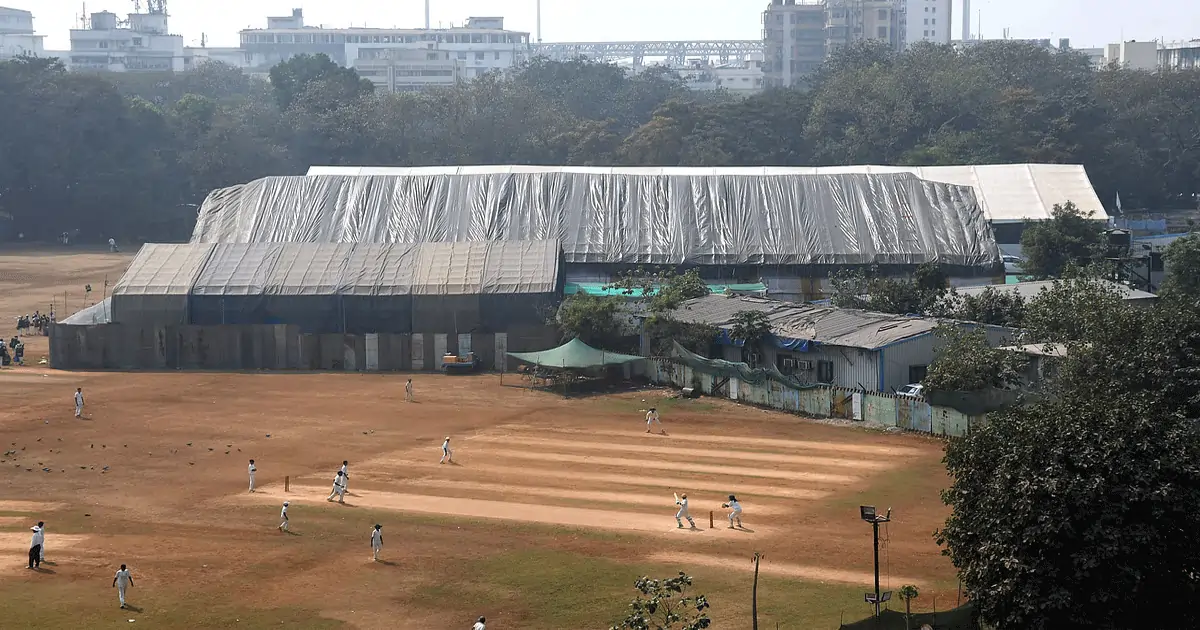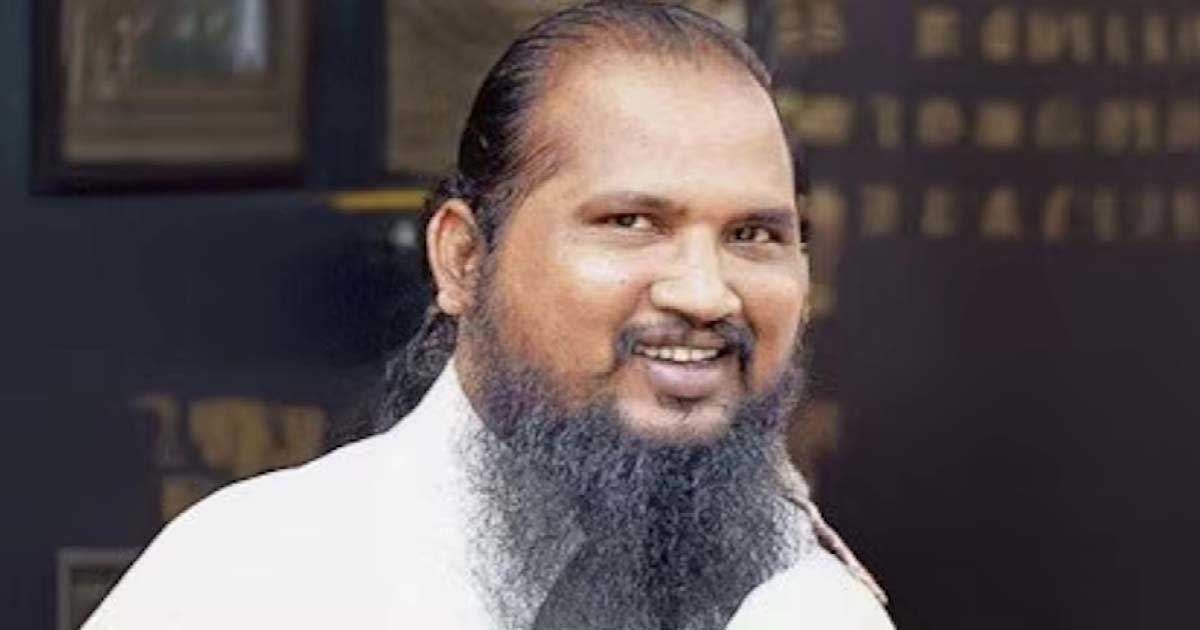Maharashtra
Save Our Playgrounds: Azad Maidan Lost To Non-Sporting Activities One Pitch At A Time

Mumbai: Azad Maidan has hosted many of India’s legendary cricketers for their first tournaments as well as some of their record-breaking partnerships, giving Mumbai an identity as the city of cricket. As the need for open spaces to facilitate various developmental, social and political purposes has increased, its oldest playground has been shrinking one pitch at a time.
The triangular Azad Maidan was a hub for the Civil Disobedience Movement, when around two lakh people joined to greet Mahatma Gandhi. However, the ground has been more popular for launching cricketers like Sachin Tendulkar, Vinod Kambli and others.
The 25-acre maidan has been distributed among 22 sports clubs, which have one pitch each. Since 2015, 16 plots, belonging to John Bright Cricket Club, Muslim United, Young Mohammedan and St Xaviers’, among others, have been handed over to the Mumbai Metro Rail Corporation Limited for the construction of the underground corridor for Metro 3. While MMRCL had promised to hand over the ground and pitches after restoration by June 2024, the process is still nowhere close to being completed.
One of the remaining six plots has been handed over to Mumbai Police for their parade practice, one ground is appropriate only for children. This leaves Mumbai’s cricket enthusiasts with only four grounds that are fit to host a professional tournaments. These comprise Sassanian Cricket Club, Elphinstone Cricket Club, New Era and Hindustan Construction. Several political parties have also been permitted by PWD officials to build permanent offices on the ground.
“In the early 1990s, I had fought to evict illegal hawkers and slums which had encroached upon the playground, restricting cricket activities,” said Nadeem Memon, cricket secretary of the Mumbai School Sports Association. “We could successfully push out the illegal encroachment but are unable to do anything about the legal encroachment. Players have to go as far as Navi Mumbai and Vasai-Virar to play interschool matches.”
Azad Maidan has always hosted sports and civil protests, which flourished in the city alongside each other. After the metro construction work occupied a large part of the ground, including the protest site in front of the BMC headquarters, protestors were diverted to Fort Vijay Cricket Club, a 115-year-old club represented by renowned cricketer Vijay Merchant.
Jayant Jhaveri, secretary of Fort Vijay Cricket Club, said, “We opposed the decision to allow protests on our playground but that resulted in our field being concretised. Since 2017, we have not played any match on our ground and have to depend on the Mumbai Cricket Association (MCA) for a substitute ground. This has also affected players’ performance. We are not able to form good teams due to this setback.”
While the maidan has also been hosting a few Ramlila performances and the annual Sunni Ijtema on a regular basis, the frequency of such non-sporting events has increased in recent times. Mega marathon events and political rallies have hindered sports activities. The recent swearing-in ceremony of the Mahayuti government was also organised at Azad Maidan.
Several religious functions are also held here, and have caused a lot of damage.
“When we ask for permission to upgrade something, the authorities deny the request citing the heritage status of the ground. At the same time, [organisers of] non-sporting activities are allowed to dig up the ground to set up huge pandals for multiple days. In some of these events, they have also broken the fencing of the ground. While setting up the pandals their trucks run over our pitches which hurts like they are running over our hearts,” said Memon.
These surprise events pause the game for a few days as the permission given to the organisers to set up their pandals starts two days before and ends two days after the actual event. This results in postponement of multiple tournaments as well as affecting the playing field, which is known for hosting various prestigious tournaments including the Harris Shield and the Giles Shield.
Manik Madkaikar, a cricket coach associated with MCA, said, “The number of non-sport events in Azad Maidan has increased in the last year. Such events cause irreparable loss to the field and a lot of things go for a toss. Groundsmen work tirelessly to level the field and everything is ruined with one event. These mega marathon events earn crores of rupees in profit, but this money is never spent on betterment of the ground.”
“Days when events are organised on the maidan, they become no-play days for us. Irregular matches and uneven ground affects our performance in tournaments, where we aspire to perform well. The effect of this is suffered mostly by schoolchildren who cannot participate in interschool tournaments as the postponement collides with their examinations,” said Vineet Kumar, a young cricketer.
Maharashtra
Mumbai: Jains Donate ₹1.38 Crore To 141 Flood-Hit Gaushalas Across Maharashtra

In a remarkable act of compassion, the Jain community in Mumbai distributed ₹1.38 crore to 141 gaushalas across Maharashtra that were affected by recent floods.
According to Paresh Shah, a member of the Maharashtra Goseva Aayog, the donations will help the gaushalas purchase fodder and essential supplies for their cattle. Each gaushala received ₹50,000 as part of the relief distribution.
The contribution was made during the ‘Jivdaya Mahotsav’, held on Sunday at a Jain temple in Chinchpokli. Of the total amount, the Sheth Damji Lakshmichand Charitable Trust contributed ₹63 lakh. The community also launched a ₹27-lakh animal ambulance to aid animal welfare initiatives in Mumbai.
The event was graced by Shaina N C, national spokesperson of the Shiv Sena, as the chief guest, and Girishbhai Shah from the Animal Welfare Board of India.
Notable donors included the Deepakbhai Bheda family and the Diyodar Jain Sangh, each contributing ₹11 lakh.
Organisers said the initiative reflects the Jain community’s commitment to ‘Jivdaya’ (compassion for all living beings) and aims to support animal shelters struggling after the floods.
Maharashtra
Mumbai: Harassment of ordinary Muslims in the name of Bangladeshis should stop, Abu Asim makes serious allegations against the government over Home Minister Amit Shah’s statement

abu azmi
Mumbai: Maharashtra Samajwadi Party leader Worker Assembly Abu Asim Azmi criticized the statement of Home Minister Amit Shah and said that it is the responsibility of the Home Minister and the Central Government to take action against Bangladeshi and Pakistani infiltrators. The population of Muslims in India has increased due to Bangladeshis. This is completely wrong. The residents of West Bengal and ordinary Muslims are being targeted under the guise of Bangladeshi and Pakistanis. He said that the government is yours in many states and at the center, so how do Bangladeshi infiltrators enter from the border? What action has the government taken against those who forge their documents so far? He said that targeting Muslims under the guise of Bangladeshi should be stopped, just as Karat Soumya is trying to fake the certificates and documents of every Muslim and is targeting Muslims. He said that the government should pay attention to how Bangladeshi infiltrators infiltrate from the Indian border. This is not the job of Congress, SP or other parties. It is the job of the government to take action against Bangladeshi and Pakistanis and to bring them to justice. But Muslims should not be harassed or disturbed. He said that action is being taken against those officers who are preparing documents for Bangladeshis.
Maharashtra
Mumbai underworld don DK Rao arrested for extortion on Saturday

Mumbai: Mumbai Crime Branch has claimed to have arrested gangster DK Rao, a member of the Mumbai underworld Don Chota Rajan gang, on charges of extortion. Along with this, the police have also arrested two of his associates Anil Singh and Menit Bhuta. The gangster, along with Menit Bhuta, had collected Rs 1.25 crore from an investor and threatened him with dire consequences, after which the complainant lodged a complaint with the police. The police took action and arrested DK Rao and obtained his remand. The Mumbai Crime Branch had also arrested DK Rao on charges of threatening a hotel owner and demanding Rs 2.5 crore. Along with this, his associates were also arrested.
A hotel owner in the suburban Sakinaka area was threatened and forced occupation of a hotel is also an allegation. A case was registered in this matter in which DK Rao is on bail. Last night, DK Rao appeared in the sessions court in connection with the hearing of his old case. He had gone for an appointment and the police arrested him. In this case, the police are interrogating him and his associates. It is said that DK Rao still has a hold and terror in the Dharavi area and is involved in other illegal activities including weekly summons. The Crime Branch has now tightened its grip on this, which is causing terror in the underworld. In this case, the Crime Branch will also interrogate DK Rao’s associates. Along with this, the Crime Branch will also interrogate the victims who were victims of DK Rao’s harassment.
-

 Crime3 years ago
Crime3 years agoClass 10 student jumps to death in Jaipur
-

 Maharashtra1 year ago
Maharashtra1 year agoMumbai Local Train Update: Central Railway’s New Timetable Comes Into Effect; Check Full List Of Revised Timings & Stations
-

 Maharashtra12 months ago
Maharashtra12 months agoMumbai To Go Toll-Free Tonight! Maharashtra Govt Announces Complete Toll Waiver For Light Motor Vehicles At All 5 Entry Points Of City
-

 Maharashtra1 year ago
Maharashtra1 year agoFalse photo of Imtiaz Jaleel’s rally, exposing the fooling conspiracy
-

 National News1 year ago
National News1 year agoMinistry of Railways rolls out Special Drive 4.0 with focus on digitisation, cleanliness, inclusiveness and grievance redressal
-

 Maharashtra11 months ago
Maharashtra11 months agoMaharashtra Elections 2024: Mumbai Metro & BEST Services Extended Till Midnight On Voting Day
-

 National News1 year ago
National News1 year agoJ&K: 4 Jawans Killed, 28 Injured After Bus Carrying BSF Personnel For Poll Duty Falls Into Gorge In Budgam; Terrifying Visuals Surface
-

 Crime12 months ago
Crime12 months agoBaba Siddique Murder: Mumbai Police Unable To Get Lawrence Bishnoi Custody Due To Home Ministry Order, Says Report












